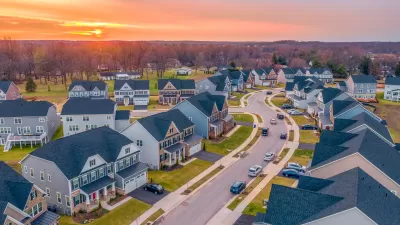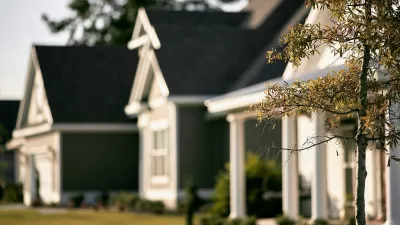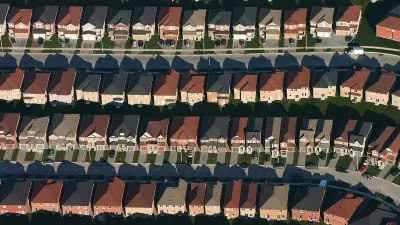Small towns like Carmel, Indiana have gained national prominence after redeveloping into "cities where people can live, work and play," writes Haya El Nassar.
"It's a trend emerging in an increasing number of commuter suburbs," observes Nassar, "from Texas and Colorado to Alabama, continuing to blur the lines between urban and suburban." The former bedroom community of Carmel, Indiana is a prime example of this new type of hybrid community with its "cosmopolitan flair unusual in suburbia." Having "forged a national reputation because of its embrace of the arts, European-style street design and urban housing," Money magazine ranked Carmel the No. 1 best place to live this year, reports Nassar.
"These small but growing towns are applying some of the most forward-thinking planning tenets to create true downtowns, art districts and new traffic patterns that alleviate congestion and encourage walking. They're changing zoning to build city-style condos and apartments above stores. And they're getting away from big parking lots and strip malls by putting parking underground and behind stores." Nassar notes, "Often, the downtowns are created around a new city hall, transit stations, arts center - or all three." Other notable small cities that have successfully undergone this smart growth transformation include Homewood, Alabama; West Jordan, Utah; Lakewood, Colorado; and Southlake, Texas.
FULL STORY: More small towns thinking big

Alabama: Trump Terminates Settlements for Black Communities Harmed By Raw Sewage
Trump deemed the landmark civil rights agreement “illegal DEI and environmental justice policy.”

Planetizen Federal Action Tracker
A weekly monitor of how Trump’s orders and actions are impacting planners and planning in America.

The 120 Year Old Tiny Home Villages That Sheltered San Francisco’s Earthquake Refugees
More than a century ago, San Francisco mobilized to house thousands of residents displaced by the 1906 earthquake. Could their strategy offer a model for the present?

LA’s Tree Emergency Goes Beyond Vandalism
After a vandal destroyed dozens of downtown LA trees, Mayor Karen Bass vowed to replace them. Days later, she slashed the city’s tree budget.

Sacramento Leads Nation With Bus-Mounted Bike Lane Enforcement Cameras
The city is the first to use its bus-mounted traffic enforcement system to cite drivers who park or drive in bike lanes.

Seattle Voters Approve Social Housing Referendum
Voters approved a corporate tax to fund the city’s housing authority despite an opposition campaign funded by Amazon and Microsoft.
Urban Design for Planners 1: Software Tools
This six-course series explores essential urban design concepts using open source software and equips planners with the tools they need to participate fully in the urban design process.
Planning for Universal Design
Learn the tools for implementing Universal Design in planning regulations.
Ada County Highway District
Clanton & Associates, Inc.
Jessamine County Fiscal Court
Institute for Housing and Urban Development Studies (IHS)
City of Grandview
Harvard GSD Executive Education
Toledo-Lucas County Plan Commissions
Salt Lake City
NYU Wagner Graduate School of Public Service





























